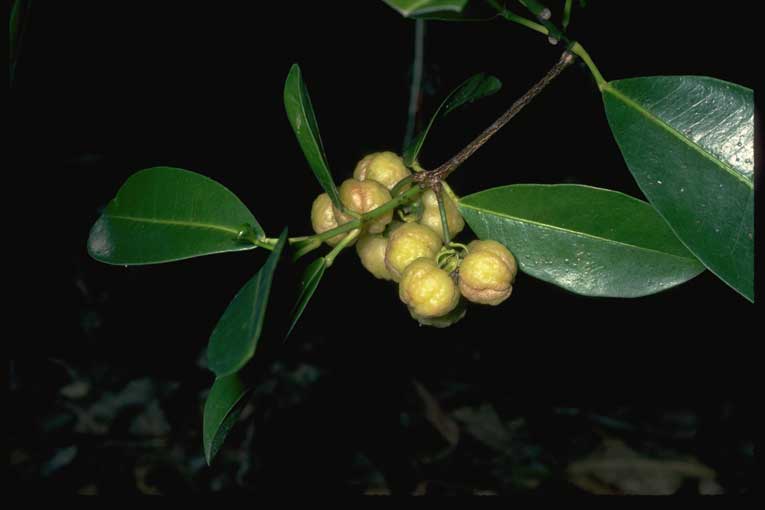Acronychia Littoralis on:
[Wikipedia]
[Google]
[Amazon]
 ''Acronychia littoralis'', commonly known as the scented acronychia, is a species of small tree that is
''Acronychia littoralis'', commonly known as the scented acronychia, is a species of small tree that is
Image:Acronychia littoralis - leaves.JPG, Juvenile leaves
Image:Acronychia littoralis - trunk.JPG, Trunk
Image:Acronychia littoralis - leaves & buds.JPG, Flower buds and leaves
Image:ScentedAcronychia-flowers.JPG, Flowers and leaves
Image:ScentedAcronychia-flowers2.JPG, Flowers and leaves
Image:Acronychia littoralis in flower.JPG, Flowers and leaves
Image:Acronychia littoralis habit.jpg, Habit in Coffs Harbour Botanic Garden
{{Taxonbar, from=Q956143
littoralis
Flora of New South Wales
Flora of Queensland
Plants described in 1984
Taxa named by Thomas Gordon Hartley
Taxa named by John Beaumont Williams
 ''Acronychia littoralis'', commonly known as the scented acronychia, is a species of small tree that is
''Acronychia littoralis'', commonly known as the scented acronychia, is a species of small tree that is endemic
Endemism is the state of a species being found in a single defined geographic location, such as an island, state, nation, country or other defined zone; organisms that are indigenous to a place are not endemic to it if they are also found elsew ...
to eastern coastal Australia. It has simple, glabrous, elliptic to egg-shaped leaves, small groups of yellow flowers and egg-shaped to more or less spherical creamy-yellow fruit.
Description
''Acronychia littoralis'' is a tree that typically grows to a height of and has a straight, grey, cylindrical trunk. The leaves are glabrous, arranged in opposite pairs, broadly elliptical to broadly egg-shaped with the narrower end towards the base, mostly long and wide on a petiole long. The flowers are mainly arranged in leafaxil
A leaf ( : leaves) is any of the principal appendages of a vascular plant stem, usually borne laterally aboveground and specialized for photosynthesis. Leaves are collectively called foliage, as in "autumn foliage", while the leaves, st ...
s in cymes
An inflorescence is a group or cluster of flowers arranged on a stem that is composed of a main branch or a complicated arrangement of branches. Morphologically, it is the modified part of the shoot of seed plants where flowers are formed on ...
long, each flower on a pedicel
Pedicle or pedicel may refer to:
Human anatomy
*Pedicle of vertebral arch, the segment between the transverse process and the vertebral body, and is often used as a radiographic marker and entry point in vertebroplasty and kyphoplasty procedures
...
long. The four sepal
A sepal () is a part of the flower of angiosperms (flowering plants). Usually green, sepals typically function as protection for the flower in bud, and often as support for the petals when in bloom., p. 106 The term ''sepalum'' was coined b ...
s are wide, the four petal
Petals are modified Leaf, leaves that surround the reproductive parts of flowers. They are often advertising coloration, brightly colored or unusually shaped to attract pollinators. All of the petals of a flower are collectively known as the ''c ...
s yellow and long and the eight stamen
The stamen (plural ''stamina'' or ''stamens'') is the pollen-producing reproductive organ of a flower. Collectively the stamens form the androecium., p. 10
Morphology and terminology
A stamen typically consists of a stalk called the filame ...
s alternate in length. Flowering occurs from February to March and the fruit is a fleshy creamy yellow, egg-shaped to more or less spherical drupe
In botany, a drupe (or stone fruit) is an indehiscent fruit in which an outer fleshy part (exocarp, or skin, and mesocarp, or flesh) surrounds a single shell (the ''pit'', ''stone'', or '' pyrena'') of hardened endocarp with a seed (''kernel'') ...
long with four lobes separated by shallow fissures.
Taxonomy
''Acronychia littoralis'' was first formally described in 1984 byThomas Hartley
Thomas Hartley (September 7, 1748December 21, 1800) was an American lawyer, soldier, and politician from York, Pennsylvania.
Early life and education
Hartley was born in Colebrookdale Township in the Province of Pennsylvania. At 18 years of ...
and J.B. Williams in the journal ''Brunonia
''Brunonia australis'', commonly known as the blue pincushion or native cornflower, is a perennial or annual herb that grows widely across Australia. It is found in woodlands, open forest and sand plains. In Cronquist's classification scheme ...
'' from specimens collected by J.B. Williams near Brunswick Heads
Brunswick Heads is a small town on the north coast of New South Wales, Australia in Byron Shire. At the , the town had a population of 1,737 people.
History
Originally inhabited by people of the Bundjalung people, Bundjalung nation, the Bru ...
in 1979.
Distribution and habitat
Scented acronychia grows in rainforest within of the coast between Fraser Island in Queensland and Iluka in New South Wales.Conservation status
This acronchyia is classified as "endangered" under the Australian Government '' Environment Protection and Biodiversity Conservation Act 1999'', the New South Wales Government '' Biodiversity Conservation Act 2016'' and the Queensland Government ''Nature Conservation Act 1992
The ''Nature Conservation Act 1992'' is an act of the Parliament of Queensland, Australia, that, together with subordinate legislation, provides for the legislative protection of Queensland's threatened biota.
As originally published, it prov ...
''. The main threats to the species include inappropriate use of four-wheel drive vehicles, weed invasion and salt burn at exposed sites.
References
Gallery